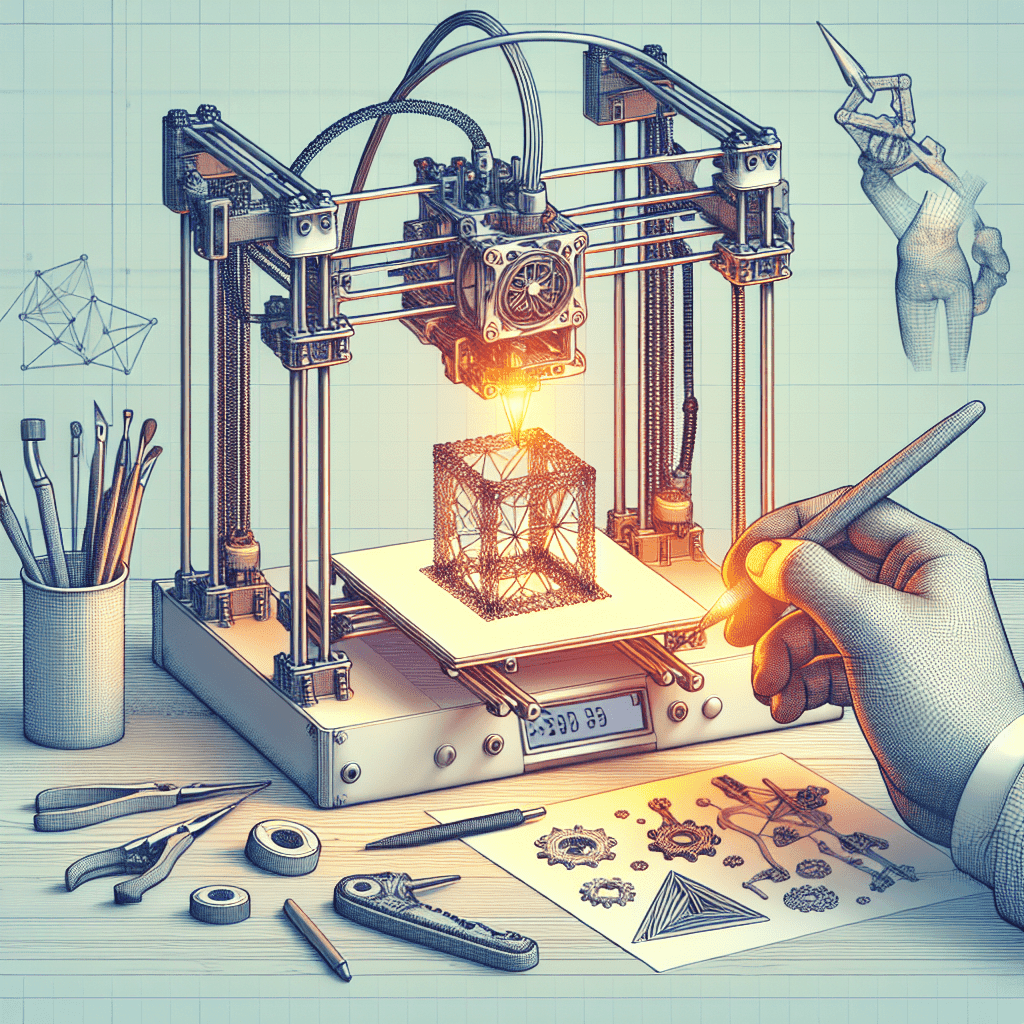Table of Contents
Introduction
PID tuning is a crucial aspect of 3D printing that often goes overlooked by newcomers to the hobby. However, mastering PID tuning is essential for achieving consistent and high-quality prints every time. In this article, we will discuss the importance of PID tuning, how it works, and provide tips for successfully tuning your printer’s PID settings.
What is PID Tuning?
PID tuning stands for Proportional, Integral, Derivative tuning. It is a method used to adjust the parameters of a control loop in order to achieve optimal performance. In the context of 3D printing, PID tuning is used to regulate the temperature of the hotend and heated bed to ensure consistent and accurate temperature control.
The Proportional term (P) determines how much the temperature should change in response to an error (the difference between the desired temperature and the actual temperature). The Integral term (I) takes into account the accumulated error over time and adjusts the output accordingly. The Derivative term (D) anticipates future error changes based on the current rate of change.
Why is PID Tuning Important?
PID tuning is important for several reasons. Firstly, it ensures consistent and accurate temperature control, which is crucial for achieving high-quality prints. Fluctuations in temperature can lead to issues such as layer adhesion problems, warping, and poor surface finish.
Secondly, PID tuning can help prevent thermal runaway, a dangerous situation where the temperature of the hotend or heated bed exceeds safe levels. Thermal runaway can lead to equipment damage, fire hazards, and even injury.
Lastly, PID tuning can help improve print quality by reducing the likelihood of issues such as stringing, blobbing, and oozing. By fine-tuning the PID settings, you can achieve smoother and more precise prints.
How to Perform PID Tuning
Performing PID tuning on your 3D printer involves adjusting the Proportional, Integral, and Derivative parameters to achieve optimal temperature control. There are several methods for tuning PID settings, including manual tuning, autotuning, and using software tools.
Manual tuning involves adjusting the PID values one at a time and observing the effects on temperature control. This method can be time-consuming and requires some trial and error, but it can yield good results if done carefully.
Autotuning is a feature available on some 3D printers that automatically adjust the PID settings based on feedback from the temperature sensor. While autotuning can be convenient, it may not always produce the best results, especially if the printer’s firmware is not well-tuned.
Using software tools such as PID Tuner or OctoPrint plugins can also help simplify the tuning process. These tools allow you to adjust the PID parameters and visualize the effects in real time, making it easier to find the optimal settings.
Tips for Successful PID Tuning
To achieve perfect prints every time, follow these tips for successful PID tuning:
1. Start with default settings: Before making any adjustments, record the default PID values of your printer. This will serve as a reference point in case you need to revert back to the original settings.
2. Make small changes: When adjusting the PID parameters, make small changes and observe the effects on temperature control. Avoid making large adjustments all at once, as this can lead to instability and erratic behaviour.
3. Use a PID tuning guide: Many online resources provide step-by-step guides for PID tuning specific to different 3D printer models. Follow these guides for the best results.
4. Monitor temperature fluctuations: Keep an eye on the temperature graph during PID tuning to ensure that the temperature remains stable and within the desired range.
5. Test print quality: After adjusting the PID settings, perform test prints to evaluate the impact on print quality. Look for improvements in layer adhesion, surface finish, and overall print consistency.
Conclusion
PID tuning is a critical aspect of 3D printing that can greatly impact print quality and consistency. By understanding the principles of PID tuning and following best practices, you can achieve perfect prints every time. Remember to start with default settings, make small adjustments, monitor temperature fluctuations, and test print quality to fine-tune your printer’s PID settings. With practice and patience, you can master PID tuning and enjoy high-quality prints with every project.
Frequently Asked Questions (FAQs)
How often should I perform PID tuning on my 3D printer?
It is recommended to perform PID tuning whenever you notice temperature fluctuations or issues with print quality. Some users perform PID tuning regularly as part of their maintenance routine.
Can PID tuning be done on any 3D printer?
PID tuning is a common feature on most 3D printers with heated beds and hotends. However, the process and tools for PID tuning may vary depending on the printer model and firmware.
What are the signs that my 3D printer needs PID tuning?
Signs that your 3D printer may need PID tuning include inconsistent temperature control, thermal runaway warnings, and print quality issues such as warping, stringing, or oozing.
Can PID tuning improve print speed?
While PID tuning primarily focuses on temperature control, it can indirectly improve print speed by reducing the likelihood of issues that may slow down the printing process, such as filament jams or failed prints.
Can I damage my 3D printer by incorrectly tuning the PID settings?
While it is unlikely to cause permanent damage, incorrect PID tuning can lead to temperature fluctuations, thermal runaway, and poor print quality. It is important to follow best practices and guidelines when performing PID tuning.
